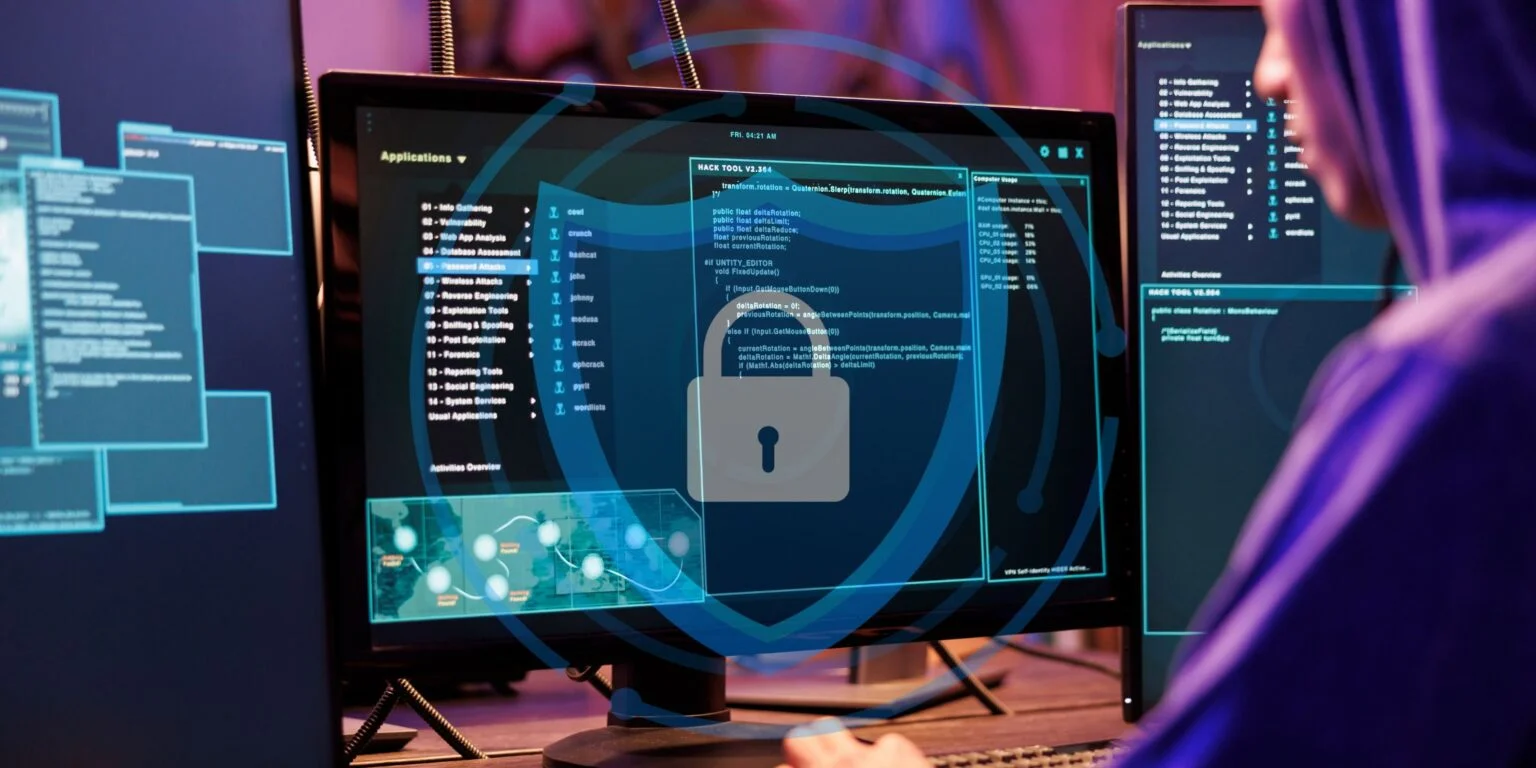In the hyper-connected, software-driven world of the 21st century, the question is no longer if a security breach will happen, but when. The perimeter has dissolved, the attackers are sophisticated and relentless, and the attack surface is a sprawling, ever-expanding digital frontier. A software security breach is no longer a rare, black swan event; it is an unfortunate and almost inevitable cost of doing business in the digital age. But the moments that follow the initial detection of a breach are what truly separate the resilient from the ruined. This is the moment of the digital autopsy, the critical and high-stakes process of incident response and investigation.
A software security breach is a moment of chaos, a crisis that can trigger a cascade of technical, financial, legal, and reputational damage. A swift, methodical, and forensically sound investigation is not just about figuring out what happened; it is the essential, time-sensitive process of stopping the bleeding, assessing the damage, eradicating the threat, and, most importantly, learning the hard lessons that will fortify the defenses against the next attack. This is a discipline that is part art and part science, a fusion of deep technical expertise, meticulous process, and cool-headed crisis management. This comprehensive guide will walk you through the entire lifecycle of a software security breach investigation, from the first faint signal of compromise to the final, detailed post-mortem report, providing the strategic and tactical playbook for navigating the most challenging moments in modern cybersecurity.
The Inevitable Crisis: Understanding the Modern Breach Landscape
Before we can dissect the process of an investigation, it is crucial to understand the nature of the threats we are facing. The modern software security breach is a far cry from the mischievous viruses of the past. We are now in a world of highly organized, professional, and often state-sponsored adversaries.
Understanding the common anatomy of an attack is the first step in knowing what to look for when the alarm bells start ringing.
The Anatomy of a Modern Cyberattack: The “Cyber Kill Chain”
Most sophisticated attacks follow a predictable, multi-stage pattern, often conceptualized in frameworks such as the Lockheed Martin Cyber Kill Chain or the MITRE ATT&CK Framework.
An attacker does not just smash through the front door; they methodically follow a series of steps to achieve their objective.
- Reconnaissance: The attacker gathers information about the target organization, looking for weaknesses in its public-facing systems, identifying key employees, and scanning for vulnerable software.
- Initial Compromise (The “Beachhead”): This is the moment the attacker gains their first foothold inside the network. This is often achieved through:
- Phishing: Tricking an employee into clicking a malicious link or opening a weaponized attachment.
- Exploiting a Vulnerability: Taking advantage of a known (but unpatched) or a “zero-day” (previously unknown) vulnerability in a public-facing web application or server.
- Stolen Credentials: Using a username and password that were stolen in a previous breach or purchased on the dark web.
- Persistence: Once inside, the attacker’s first goal is to maintain their access. They will install malware, create backdoor accounts, or use other techniques to ensure they can get back in even if their initial entry point is discovered.
- Privilege Escalation: The attacker will then work to escalate their privileges, moving from a compromised low-level user account to a more powerful administrator or “root” account.
- Lateral Movement: Once they have elevated privileges, the attacker will begin moving “laterally” across the network, exploring the environment, mapping systems, and searching for their ultimate target.
- Actions on Objectives: This is the final phase in which the attacker achieves their goal. This could be:
- Data Exfiltration: Finding and stealing the “crown jewels”—the sensitive customer data, the intellectual property, the financial records.
- Ransomware Deployment: Encrypting the organization’s critical data and demanding a ransom for the decryption key.
- Sabotage or Disruption: Intentionally damaging or disrupting the organization’s systems, as seen in attacks on critical infrastructure.
The goal of a breach investigation is to painstakingly reconstruct the entire chain of events, identify the “patient zero” of the initial compromise, and trace the attacker’s every move through the network.
The First 72 Hours: The Incident Response Lifecycle – A Framework for Chaos
When a breach is detected, the clock starts ticking. The first few hours and days are a period of intense pressure and “fog of war.” A well-defined and well-rehearsed Incident Response (IR) Plan is the essential playbook that separates a controlled, effective response from a chaotic and value-destroying disaster.
The most widely adopted incident response framework is the one developed by the National Institute of Standards and Technology (NIST), which breaks the process into four key phases.
Phase 1: Preparation – The Work You Do Before the Breach
The single most important phase of incident response happens before the incident. An organization that has not prepared for a breach is destined to fail when one occurs.
Thorough preparation is about having the people, the processes, and the technology in place and ready to go at a moment’s notice.
- Building the Incident Response Team: This involves creating a dedicated, cross-functional Computer Security Incident Response Team (CSIRT). This team should have a clear leader and should include not just technical experts (from security, IT, and engineering), but also representatives from legal, communications/PR, HR, and executive leadership.
- Creating the Incident Response Plan (IRP): The IRP is the detailed, step-by-step playbook that the team will follow. It should define roles and responsibilities, establish communication and escalation protocols, and provide detailed technical procedures for different incident types.
- The Criticality of Logging and Monitoring: The single most important technical preparation is to ensure comprehensive, centralized logging and monitoring. You cannot investigate what you cannot see. This means collecting and retaining logs from every critical system—firewalls, servers, applications, and endpoints—and having the tools (like a Security Information and Event Management (SIEM) system) to search and analyze this data.
- Regular Drills and Tabletop Exercises: An untested plan is just a document. The CSIRT must regularly conduct drills and “tabletop exercises” in which they walk through a simulated breach scenario to test the plan and their own readiness.
Phase 2: Detection and Analysis – The “Something is Wrong” Moment
This phase is about identifying that an incident has occurred and performing the initial analysis to validate it, determine its scope, and understand its impact.
The “signal” of a breach can come from a wide variety of sources.
- The Sources of Detection:
- Automated Alerts: The most common source is an alert from a security tool, such as an Intrusion Detection System (IDS), an Endpoint Detection and Response (EDR) agent, or a SIEM.
- Third-Party Notification: A notification from an external party, such as a law enforcement agency (like the FBI), a security researcher, or, worst of all, a customer whose data you have found for sale on the dark web.
- Anomalous User or System Behavior: An alert from a user who has noticed something strange on their computer, or an IT administrator who has noticed an unusual spike in network traffic or CPU usage.
- The Initial Triage and Analysis: Once a potential incident is reported, the first step is to perform a rapid triage.
- Is it a real incident? The first job is to validate the alert and rule out a false positive.
- What is the scope? The analyst will begin by understanding the scope of the incident. How many systems are affected? What kind of data is involved?
- What is the impact? What is the business impact of the incident? Is a critical customer-facing application down? Is sensitive data being actively exfiltrated? This initial assessment of impact will drive the priority and urgency of the response.
- The “Golden Hour” of Evidence Preservation: It is absolutely critical in this initial phase to avoid the temptation to immediately “clean up” the compromised systems. The initial state of these systems is a priceless digital crime scene. Rushing in to reboot a server or delete a malicious file can destroy volatile evidence (such as the contents of the machine’s memory) that is essential to the forensic investigation. The priority is to preserve the evidence.
Phase 3: Containment, Eradication, and Recovery – Stopping the Bleeding and Rebuilding
This is the active, “hands-on” phase of the response, where the team takes action to stop the attack, remove the adversary from the network, and restore the affected systems to normal operation.
This phase is a delicate balancing act between speed and thoroughness.
- Containment: Putting a Ring Around the Fire: The immediate goal is to contain the incident and prevent the attacker from causing any further damage or moving farther through the network.
- Short-Term Containment: This often involves taking immediate, tactical actions, such as isolating compromised systems from the network, blocking a malicious IP address at the firewall, or temporarily deactivating a compromised user account.
- Long-Term Containment: This involves a more strategic approach, such as rebuilding the compromised systems from a known-good, trusted backup.
- Eradication: Removing the Intruder: Once the incident is contained, the next step is to ensure that the attacker has been completely and permanently removed from the environment. This is a critical and often-difficult step. A sophisticated attacker will have created multiple persistence mechanisms (backdoors). Simply closing the initial entry point is not enough. This phase involves a deep forensic analysis to identify and remove every artifact left behind by the attacker.
- Recovery: Getting Back to Business: The final step is to restore the affected systems and data and to return to normal business operations. This must be done carefully, with enhanced monitoring in place to prevent the attacker from regaining access immediately.
Phase 4: Post-Incident Activity – The “Lessons Learned” Phase
The work is not over when the systems are back online. This final phase is arguably the most important for the organization’s long-term security.
This is the phase of deep learning and strategic improvement.
- The Post-Mortem and Root Cause Analysis: The CSIRT should conduct a formal “post-mortem” or “lessons learned” session. The goal is to perform a blameless root cause analysis. The team should produce a detailed report documenting the entire incident timeline, the “patient zero” of the initial compromise, the full extent of the damage, and, most importantly, the specific security control failures that enabled the attack.
- The Feedback Loop to Preparation: The report’s findings are then fed directly back into the preparation phase. The organization must use these hard-won lessons to make concrete improvements to its security posture—to patch vulnerabilities, deploy new security controls, and update its incident response plan. This is the feedback loop that creates a more resilient and “anti-fragile” organization.
The Digital Crime Scene: A Deep Dive into the Forensic Investigation Process
At the heart of any breach investigation is the discipline of Digital Forensics. This is the meticulous, scientific process of collecting, preserving, analyzing, and presenting digital evidence in a legally admissible way.
A forensic investigation is a journey back in time, a digital autopsy that seeks to reconstruct the attacker’s every move with a high degree of certainty.
The Foundational Principles of Digital Forensics
The entire discipline is built on a set of foundational principles that are designed to ensure the integrity of the evidence.
- The Chain of Custody: Every piece of digital evidence must have a meticulously documented “chain of custody.” This is a chronological record that details who collected the evidence, who had access to it, and what was done with it, at every step of the process. A broken chain of custody can render the evidence inadmissible in a court of law.
- Work on a Copy, never on the Original: This is the golden rule. A forensic investigator will never perform their analysis on the original, compromised system. The first step is always to create a perfect, bit-for-bit forensic “image” (an exact copy) of the system’s hard drive and its volatile memory. All analysis is then performed on this copy, preserving the original evidence in its pristine, unaltered state.
- Meticulous Documentation: Every single step of the investigation, from the collection of the image to the analysis of a specific file, must be meticulously documented in a set of detailed, contemporaneous notes.
The Sources of Evidence: The Breadcrumbs of an Attack
A skilled investigator knows where to look for the digital “breadcrumbs” that an attacker inevitably leaves behind.
The evidence is often scattered across a wide range of systems and log sources.
- 1. Volatile Memory (RAM) Forensics:
- Why it’s Critical: The contents of a computer’s volatile memory (its RAM) are a treasure trove of evidence. RAM contains a real-time snapshot of what was happening on the machine at the time of the incident, including running processes, active network connections, and command history.
- The Challenge of Volatility: This evidence is incredibly fragile. As soon as a machine is powered off, its RAM contents are lost forever. This is why preserving the memory image is the absolute first priority in a live forensic investigation.
- 2. Filesystem and Disk Forensics:
- The Goal: This involves a deep analysis of the forensic image of the system’s hard drive. The goal is to find the attacker’s malware, tools, and the data they have “staged” for exfiltration.
- The Techniques: An investigator will analyze the filesystem timeline (the creation, modification, and access times of files) to reconstruct the sequence of events. They will also use techniques to recover deleted files and to search the unallocated “slack space” of the disk for hidden data.
- 3. Network Forensics:
- The Goal: Network forensics analyzes network traffic to understand how the attacker gained access, moved laterally, and exfiltrated data.
- The Sources of Evidence: This involves analyzing logs from firewalls, proxy servers, DNS servers, and Intrusion Detection Systems. If available, a “full packet capture” (a recording of all the raw network traffic) is the ultimate source of truth, though it is often not feasible to collect and store this for long periods.
- 4. Log Analysis: The Central Nervous System of the Investigation:
- The Power of Centralized Logging: A centralized logging platform or a SIEM is the investigator’s best friend. It allows them to correlate events from across thousands of different systems to build a unified timeline of the attack.
- The Key Log Sources: An investigator will be looking at:
- Authentication Logs: To look for brute-force login attempts, impossible travel scenarios, or the use of compromised credentials.
- Application Logs: To look for signs of a web application attack, like a SQL injection or a cross-site scripting attack.
- Operating System Logs: To look for the creation of new user accounts, the installation of suspicious services, or other signs of persistence.
Reconstructing the Narrative: From Individual Artifacts to a Coherent Story
The ultimate skill of a forensic investigator is the ability to take all of these disparate digital artifacts—a malicious process found in memory, a suspicious file on a disk, a strange firewall log entry—and to weave them together into a single, coherent, and provable narrative of the attack, from the initial “patient zero” to the final exfiltration of data.
The Human Element: Managing the Crisis Beyond the Keyboard
A software security breach is not just a technical problem; it is a full-blown business crisis. The technical investigation is only one part of a much larger, cross-functional response that involves legal, communications, and executive leadership.
How a company manages the human side of the crisis is often just as important as how it manages the technical side.
The Legal Minefield: Navigating Breach Notification Laws
In the modern regulatory environment, a company that suffers a breach is no longer free to keep it quiet. They are subject to a complex and growing web of data breach notification laws.
- The GDPR’s 72-Hour Clock: The EU’s General Data Protection Regulation (GDPR) requires a company to notify its supervisory authority of a personal data breach within 72 hours of becoming aware of it, unless the breach is unlikely to pose a risk to the rights and freedoms of individuals.
- The U.S. State-Level Patchwork: The U.S. has a complex patchwork of state-level breach notification laws, each with its own specific definition of what constitutes a breach and its own timeline and requirements for notifying affected consumers.
- The SEC’s New Rules for Public Companies: The U.S. Securities and Exchange Commission (SEC) has new rules requiring public companies to disclose a “material” cybersecurity incident within four business days.
- The Role of Legal Counsel: The company’s legal counsel must be involved from the very first moments of the investigation to help navigate this complex legal minefield, manage the notification process, and protect the investigation’s findings under the attorney-client privilege.
The Court of Public Opinion: Managing the Communications Crisis
How a company communicates about a breach to its customers, partners, employees, and the public can have a massive, lasting impact on its brand and reputation.
A well-handled communications response can build trust, while a poorly handled one can destroy it.
- The “When, Not If” Dilemma of Disclosure: A key strategic decision is when to disclose the breach. Disclosing too early, before the full facts are known, can lead to the spread of misinformation and panic. Disclosing too late can lead to accusations of a cover-up and a massive loss of trust.
- The Principles of Good Crisis Communications: A good breach communication strategy is built on the principles of:
- Transparency: Be as open and honest as possible about what happened, what data was affected, and what you are doing about it.
- Empathy: Acknowledge the impact on your customers and show that you care about their security and privacy.
- Action: Clearly communicate the steps you are taking to protect your customers (e.g., offering free credit monitoring) and to prevent a recurrence.
The Executive Mandate: Leading Through the Crisis
A major security breach is a test of leadership. The company’s executive team, from the CEO down, must be visible, engaged, and decisive.
- The Role of the CEO: The CEO is the ultimate owner of the crisis. They must be the public face of the company’s response, demonstrating accountability and a deep commitment to resolving the issue.
- Supporting the Incident Response Team: The leadership team’s most important role is to support the technical and legal teams, remove any roadblocks, and provide them with the resources and political air cover they need to do their jobs without interference.
The Aftermath and the Path to Resilience: Learning the Lessons of the Breach
The end of the immediate crisis is the beginning of the long, hard work of strategic recovery and improvement. A breach is a painful but incredibly powerful learning opportunity.
The companies that emerge stronger from a breach are those that are brutally honest in their post-mortem analysis and deeply committed to turning those lessons into concrete action.
The Root Cause Analysis: Beyond the Technical Fix
A good post-mortem goes beyond the simple technical root cause (e.g., “we failed to patch a vulnerability”). It asks deeper “why” questions to uncover the underlying processes and cultural failures that enabled the technical failure. Why was our patch management process so slow? Why was our security monitoring not able to detect the attacker’s lateral movement? Why did our employees fall for the phishing email?
The Strategic Investment in Resilience
The post-mortem findings must be translated into a strategic, board-level investment and improvement plan.
This is about building a more “anti-fragile” security posture that not only withstands an attack but also gets stronger from it.
- Technical Controls: This could involve investing in new security technologies, such as an advanced EDR solution, a PAM system, or a more robust identity and access management platform.
- Process Improvements: This could involve redesigning the patch management process, strengthening the software development lifecycle (DevSecOps), or improving the data governance and classification program.
- People and Culture: This could involve a new, more effective security awareness training program for all employees and a deeper investment in the security team’s skills and training.
The Future of Breach Investigation: An AI-Powered and Automated World
The discipline of incident response and forensics is itself transforming, driven by the same forces of automation and artificial intelligence that are reshaping the rest of the technology world. The sheer scale and speed of modern attacks are pushing the limits of what human analysts can handle on their own.
The future of the “digital autopsy” will be a human-machine partnership.
The Rise of SOAR (Security Orchestration, Automation, and Response)
SOAR platforms are a new and powerful category of security tools that act as the “connective tissue” for the security operations center (SOC).
- How SOAR Works: A SOAR platform can integrate with all a company’s security tools (SIEMs, EDRs, firewalls, etc.). It can then be used to create automated “playbooks” that orchestrate responses to a common type of alert. For example, when a phishing email is reported, a SOAR playbook could automatically quarantine the email, detonate the attachment in a sandbox to see if it is malicious, and block the sender’s domain at the firewall, all without any human intervention.
- The Impact: SOAR frees human analysts from the repetitive, manual tasks of the initial response and allows them to focus their expertise on the more complex and novel aspects of the investigation.
AI and Machine Learning in Detection and Investigation
Artificial intelligence is becoming an essential co-pilot for the security analyst.
- User and Entity Behavior Analytics (UEBA): UEBA is a category of security analytics that uses machine learning to build a “baseline” of normal behavior for every user and every entity (such as servers or applications) on the network. It can then automatically detect and flag anomalous behavior that could indicate a compromised account or an insider threat, a task impossible for a human to perform at scale.
- AI-Assisted Forensics: AI is also used to assist in forensic investigations. Machine learning models can automatically sift through terabytes of log data to find the “needle in the haystack”—the one or two log entries that are key to understanding the attack.
Conclusion
In the volatile and high-stakes world of modern technology, a software security breach is a moment of profound truth. It is a brutal and unforgiving audit of an organization’s preparedness, its processes, and its culture. The moments that follow the initial alarm are a crucible, a test that will reveal the true resilience of the enterprise.
A successful breach investigation is far more than a technical exercise in digital forensics. It is a masterclass in crisis management, a delicate dance between technical precision, legal navigation, and clear, honest communication. But its ultimate value lies not in looking backward, but in looking forward. The digital autopsy, if done with rigor and a blameless commitment to learning, is the source of organizational immunity. It provides the hard-won, invaluable lessons that are the raw material for building a stronger, smarter, and more resilient defense. The attackers will never stop, and the vulnerabilities will always exist. Still, by mastering the discipline of investigation, we can ensure that each attack, however painful, leaves us not weaker but stronger than before.













